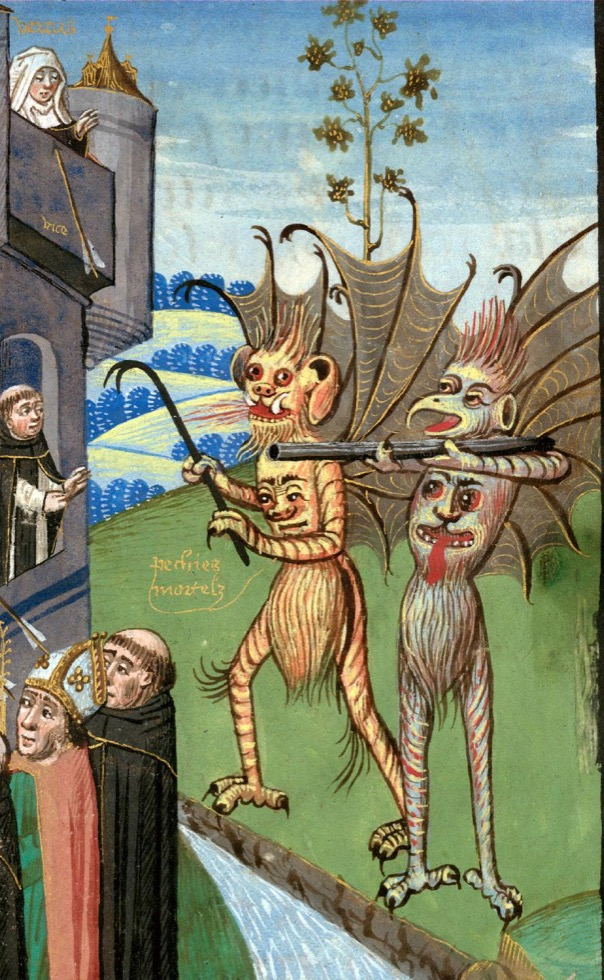
Demons attacking a castle, La Forteresse de la foi, Alphonsus de Spina, France, 15th Century. Source: BVMM



Demons attacking a castle, La Forteresse de la foi, Alphonsus de Spina, France, 15th Century. Source: BVMM

Rangda is the Demon Queen of the Leyaks, flying heads with dangling entrails, such as a heart and lungs, from Balinese folklore. They have long tongues and fangs, drink the blood of new born children, and feast on corpses in graveyards. At day, they appear human.
Image is an edit of a photo by Yves Picq, CC3 Attribution